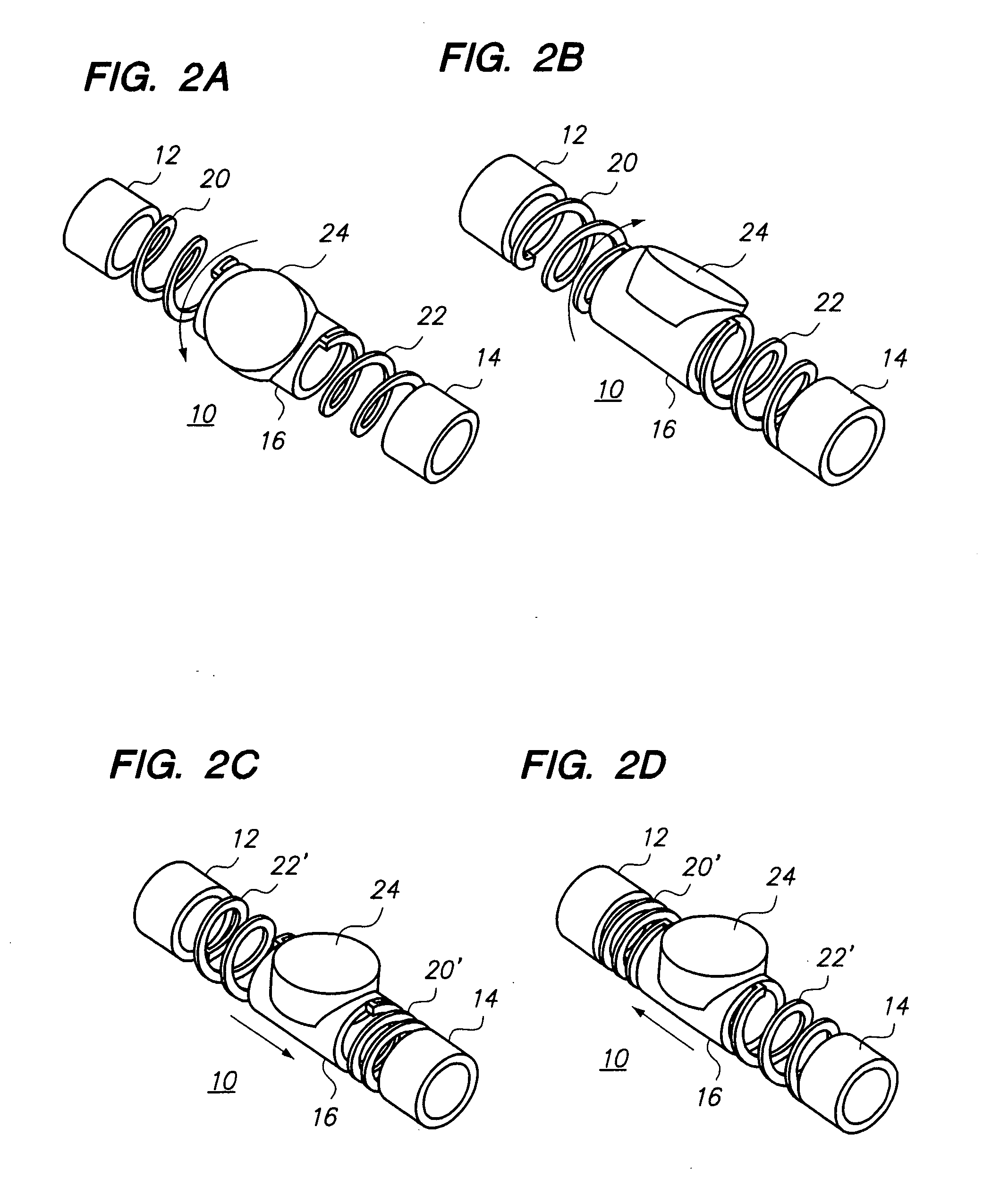Miniature actuator mechanism for intravascular optical imaging
a technology of optical imaging and actuators, applied in the field of miniature actuators, can solve the problems of difficult to check the condition inside the vessel after surgery, difficult to find the exact location of the stenosis, and very serious coronary artery diseas
- Summary
- Abstract
- Description
- Claims
- Application Information
AI Technical Summary
Benefits of technology
Problems solved by technology
Method used
Image
Examples
Embodiment Construction
[0030]The present invention relates to imaging devices for intravascular imaging, although the present invention is not limited to this preferred application. Imaging of the intravascular space, particularly the interior walls of the vasculature can be accomplished by a number of different means. Two of the most common are the use of ultrasound energy, commonly known as intravascular ultrasound (IVUS) and optical coherence tomography (OCT). Both of these methods are optimized when the instruments (IVUS or OCT) used for imaging a particular portion of the vasculature are repeatedly swept over the area being imaged.
[0031]To address the limitations in current devices, a new intravascular imaging device is described based on a Shape Memory Alloy (SMA) actuator mechanism embedded inside an elongate member such as a guide wire or catheter. The present invention utilizes a novel SMA mechanism to provide side-looking imaging by providing movement for an ultrasound transducer or OCT element....
PUM
 Login to View More
Login to View More Abstract
Description
Claims
Application Information
 Login to View More
Login to View More - R&D
- Intellectual Property
- Life Sciences
- Materials
- Tech Scout
- Unparalleled Data Quality
- Higher Quality Content
- 60% Fewer Hallucinations
Browse by: Latest US Patents, China's latest patents, Technical Efficacy Thesaurus, Application Domain, Technology Topic, Popular Technical Reports.
© 2025 PatSnap. All rights reserved.Legal|Privacy policy|Modern Slavery Act Transparency Statement|Sitemap|About US| Contact US: help@patsnap.com



